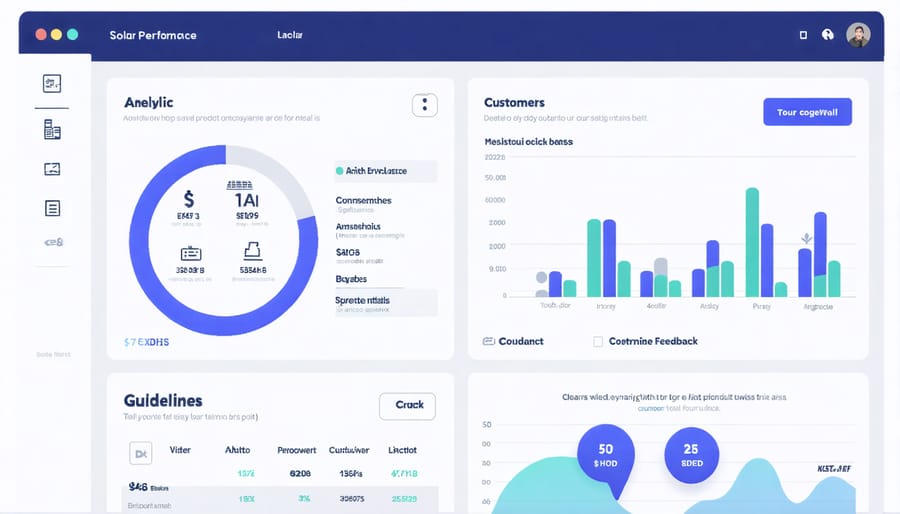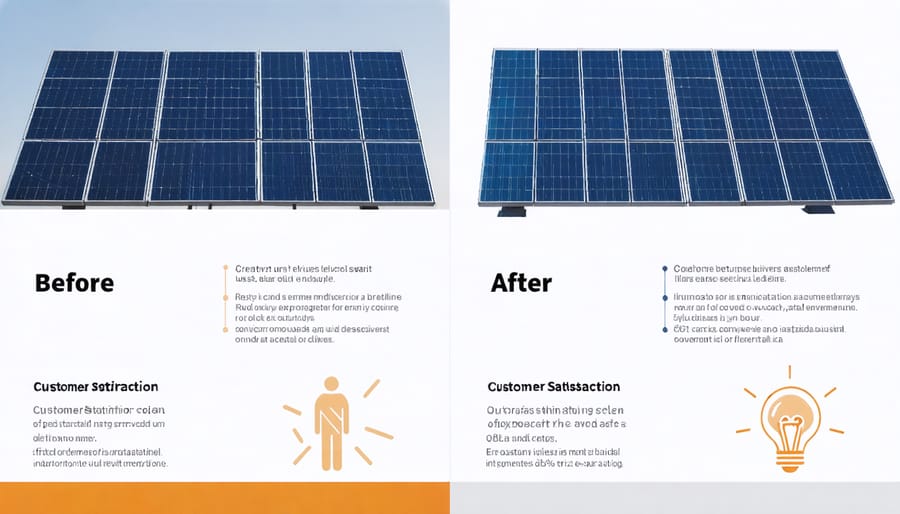Transform your utility customer relationships with modern engagement software that puts real-time data and personalized communication at your fingertips. Today’s customers expect seamless, digital interactions with their utility providers – from instant bill payments to usage tracking and service updates. Advanced customer engagement platforms deliver these capabilities while helping utilities reduce costs, improve satisfaction scores, and drive program participation.
Smart utility engagement software integrates customer data, communication tools, and analytics into one powerful ecosystem. These platforms enable personalized messaging, automated alerts, mobile-friendly portals, and behavior-based recommendations that help customers optimize their energy use. For utilities, this means stronger relationships, higher program enrollment, and data-driven insights to shape future offerings.
As utilities face increasing pressure to modernize operations and meet rising customer expectations, engagement software has become an essential tool for success. The most effective solutions combine ease-of-use with sophisticated features that benefit both providers and customers while supporting key business objectives like conservation and demand management.
Why Customer Feedback Matters in Solar Services
The Solar Customer Journey
The solar customer journey involves several critical touchpoints where feedback can significantly improve service delivery. Starting with initial research and consultation, customers need clear information and responsive communication. During system design and installation, regular updates and opportunity for input help ensure satisfaction. Post-installation, monitoring system performance and addressing maintenance concerns become paramount. Annual performance reviews and ongoing support create opportunities for valuable feedback about energy savings and system efficiency. Customer input during warranty claims or technical support interactions helps companies refine their service protocols. By gathering feedback at each stage, solar providers can better understand pain points, celebrate successes, and continuously improve their service quality. This feedback loop helps create a more positive experience for future customers while building trust in solar energy adoption.
Common Solar Service Pain Points
Solar service customers often face several common challenges that can impact their satisfaction. Many report confusion about system performance monitoring, uncertainty about maintenance schedules, and difficulties reaching customer support during critical issues. Billing clarity and understanding energy production metrics are also frequent pain points.
Through customer feedback channels, solar providers can better understand and address these concerns. When customers share their experiences about complicated billing statements, companies can develop more user-friendly formats. Similarly, feedback about monitoring difficulties has led to the creation of simplified mobile apps and real-time performance dashboards.
Response times and communication preferences are another area where feedback proves invaluable. Many providers have implemented automated alert systems and expanded support hours based on customer input. This direct feedback loop helps solar companies streamline their services, improve customer education materials, and develop more intuitive self-service tools.
By actively collecting and acting on customer feedback, solar providers can create more satisfying experiences while building lasting relationships with their customers.
Modern Feedback Collection Tools
Real-Time Monitoring and Feedback
Modern utility customer engagement software offers a powerful dual-monitoring system that keeps track of both system performance and customer satisfaction in real-time. These intelligent platforms continuously collect data from smart meters and customer interactions, creating a comprehensive view of service quality and user experience.
The software analyzes energy consumption patterns, system efficiency, and potential issues before they become problems. When unusual patterns are detected, automated alerts notify both customers and utility providers, enabling quick responses to potential service disruptions or efficiency concerns.
On the customer satisfaction side, the software tracks user interactions, feedback, and engagement levels through various channels. This includes monitoring app usage, response rates to communications, and direct feedback through surveys and support tickets. The system can identify trends in customer behavior and satisfaction, helping utilities better understand and respond to their customers’ needs.
This real-time monitoring creates a feedback loop that benefits both parties: customers receive more personalized service and faster issue resolution, while utilities can make data-driven decisions to improve their services and customer relationships.
Mobile Apps and Customer Portals
Modern utility companies are making customer feedback easier than ever through user-friendly mobile apps and web portals. These digital platforms allow customers to submit their thoughts, concerns, and suggestions with just a few taps or clicks. Most apps feature intuitive interfaces with simple rating systems, comment boxes, and even the ability to attach photos or documents when reporting issues.
These digital tools often include real-time chat support, enabling immediate communication between customers and utility representatives. Customers can track their feedback status, view response times, and receive notifications when their concerns are addressed. Many apps also offer customizable dashboards where users can monitor their energy usage, pay bills, and submit feedback all in one place.
For those who prefer traditional web access, customer portals provide similar functionality with the added benefit of larger screens and detailed forms. Both platforms typically integrate with social media, allowing customers to share their experiences and connect with their utility providers through familiar channels. This multi-channel approach ensures that customers can provide feedback in whatever way feels most comfortable to them.

Turning Feedback into Action
Data Analysis and Trend Identification
Modern utility customer engagement software uses sophisticated analytics to transform raw feedback into actionable insights. These platforms collect data from various touchpoints, including mobile apps, web portals, and smart meter readings, to create a comprehensive picture of customer satisfaction and service quality.
The software automatically categorizes feedback into key themes, such as billing concerns, service interruptions, or energy-saving suggestions. By analyzing patterns in this data, utilities can quickly identify recurring issues and prioritize improvements that matter most to customers. For example, if multiple customers report difficulty understanding their bills, the system flags this as a trending concern that needs attention.
Advanced algorithms also track sentiment over time, helping utilities understand how customer satisfaction changes with different seasons, weather events, or after implementing new programs. This temporal analysis is particularly valuable for predicting future needs and preventing potential issues before they become widespread problems.
The software also segments customers based on their behavior patterns and preferences, enabling utilities to create more targeted and effective communication strategies. For instance, environmentally conscious customers might receive more information about green energy programs, while budget-focused customers get customized energy-saving tips.
By combining real-time feedback analysis with historical data, these systems help utilities make data-driven decisions that improve service quality and customer satisfaction while optimizing resource allocation.

Service Optimization Strategies
Utility companies are increasingly adopting innovative approaches to turn customer feedback into tangible service improvements. Many providers now use automated systems to analyze customer suggestions and complaints, identifying patterns that highlight areas needing attention. For example, when multiple customers report similar issues with billing clarity, companies can quickly implement redesigned statements with more intuitive layouts and detailed usage breakdowns.
Smart meter data analysis allows utilities to proactively address potential issues before they become problems. When usage patterns indicate unusual consumption, companies can send personalized alerts and energy-saving recommendations to customers. This preventive approach not only improves service quality but also helps customers manage their utility costs more effectively.
Mobile apps have become essential tools for implementing customer suggestions. Based on user feedback, utilities regularly update their apps to include frequently requested features like real-time usage monitoring, bill payment reminders, and outage notifications. Some companies have even introduced virtual energy audits through their apps, responding to customer demands for more accessible energy-saving tools.
Community feedback forums and social media monitoring help utilities prioritize service improvements. When customers consistently request specific features or express common concerns, companies can quickly adjust their service offerings. For instance, many utilities have expanded their digital communication channels and self-service options in response to customer preferences for contactless interactions.
Benefits of Customer-Driven Improvements

Enhanced Customer Satisfaction
Modern utility engagement software excels at turning customer insights into meaningful improvements. When customer feedback drives service quality, everyone benefits from a more refined experience. These platforms collect and analyze feedback through various channels, including in-app surveys, service calls, and social media interactions.
Companies can quickly identify common pain points and implement solutions that matter most to their customers. For instance, if multiple users report difficulty understanding their energy usage patterns, the software can trigger updates to make consumption data more visually appealing and easier to interpret.
This continuous improvement cycle leads to more intuitive interfaces, clearer communication, and better-targeted services. Customers feel heard and valued when they see their suggestions implemented, leading to increased satisfaction and long-term loyalty. The result is a more engaged customer base that actively participates in shaping their utility experience while helping providers deliver more effective services.
Operational Efficiency Gains
Customer engagement software delivers significant operational benefits for utility companies while enhancing the customer experience. By automating routine communications and service requests, companies can reduce call center volume by up to 30% and resolve customer inquiries faster. Smart analytics help predict peak usage periods and potential service disruptions, allowing utilities to proactively address issues before they affect customers.
The software’s self-service capabilities empower customers to manage their accounts independently, reducing the workload on customer service teams. Digital payment processing and automated billing systems cut administrative costs while improving accuracy. Real-time usage monitoring helps identify inefficiencies and potential equipment problems, leading to faster maintenance responses and reduced downtime.
Additionally, automated appointment scheduling and service reminders decrease missed appointments and improve field crew utilization. These efficiency gains translate into cost savings that utilities can reinvest in infrastructure improvements or pass on to customers through competitive rates.
Customer engagement software has become an indispensable tool in the modern solar industry, transforming how companies interact with and serve their customers. By leveraging these innovative solutions, solar providers can create more personalized experiences, respond faster to customer needs, and continuously improve their service quality based on real-time feedback. The data-driven insights gained through these platforms enable companies to make informed decisions about their service offerings, maintenance schedules, and customer communication strategies.
For homeowners, this technology means better service, more transparent communication, and a more satisfying solar energy experience. The software’s ability to track system performance, schedule maintenance, and provide instant support ensures that their solar investment continues to deliver optimal returns. Additionally, the enhanced engagement leads to greater customer satisfaction and helps build long-lasting relationships between solar providers and their clients.
As the solar industry continues to grow, customer engagement software will play an increasingly crucial role in scaling operations while maintaining service quality. Companies that embrace these tools position themselves to deliver superior customer experiences while operating more efficiently and sustainably.









